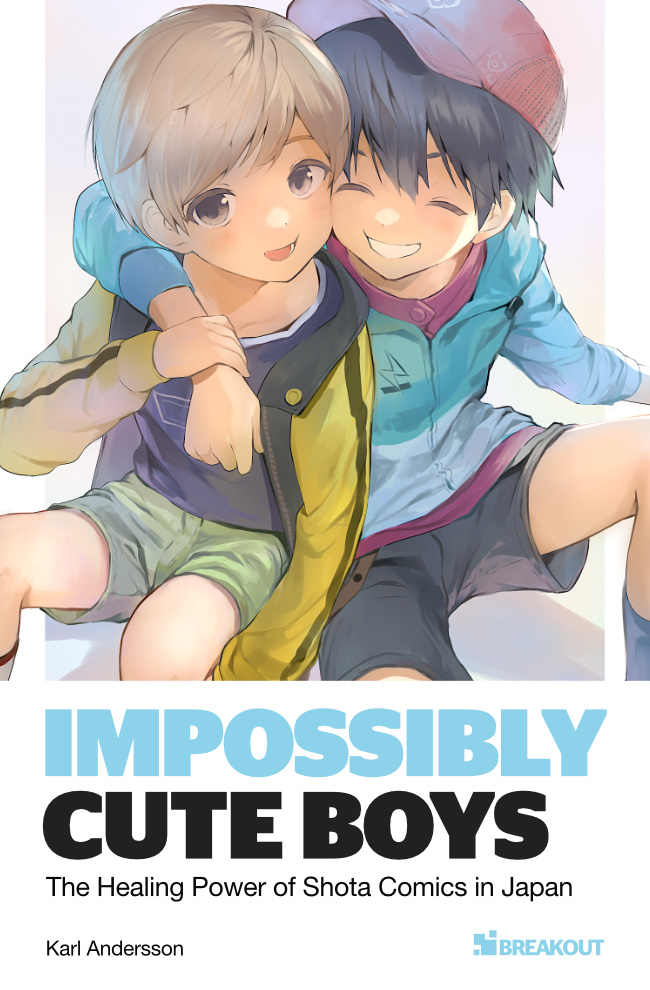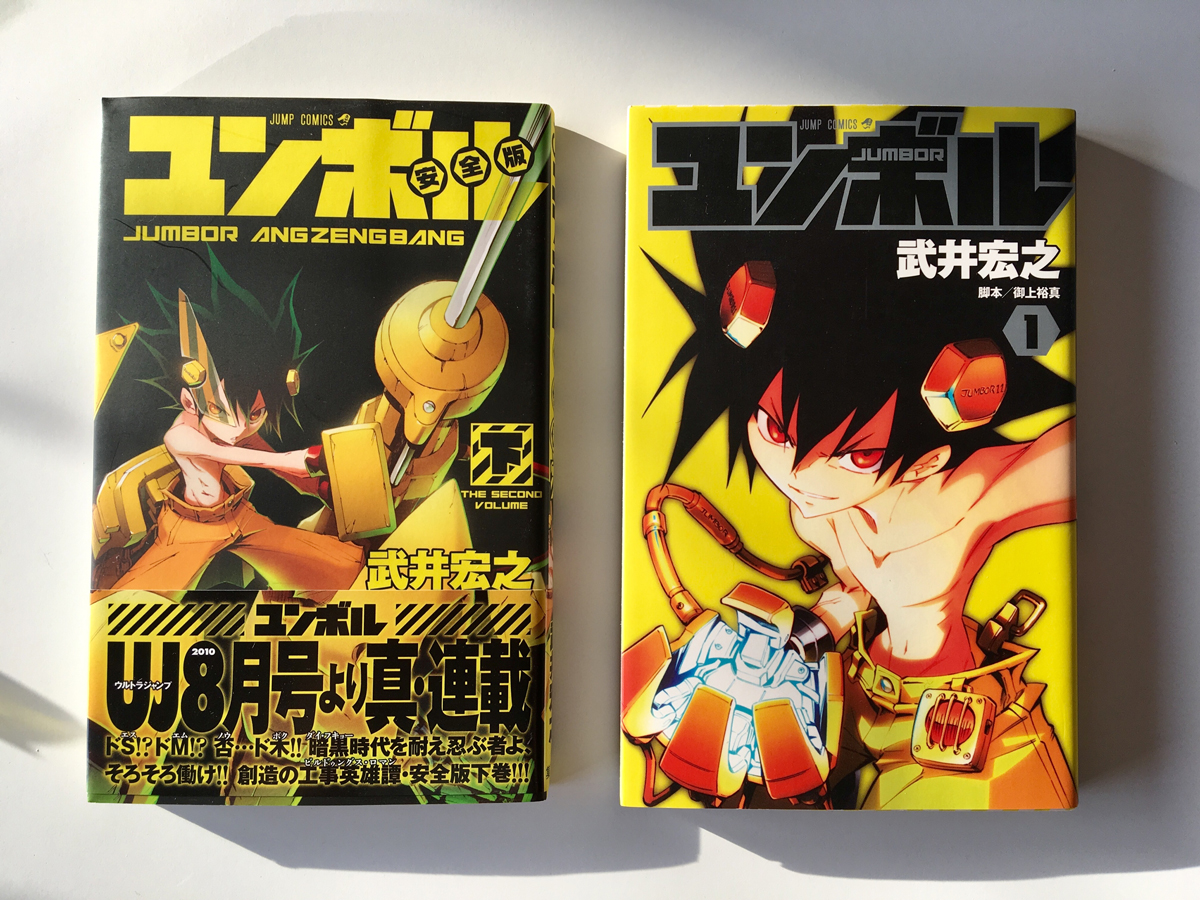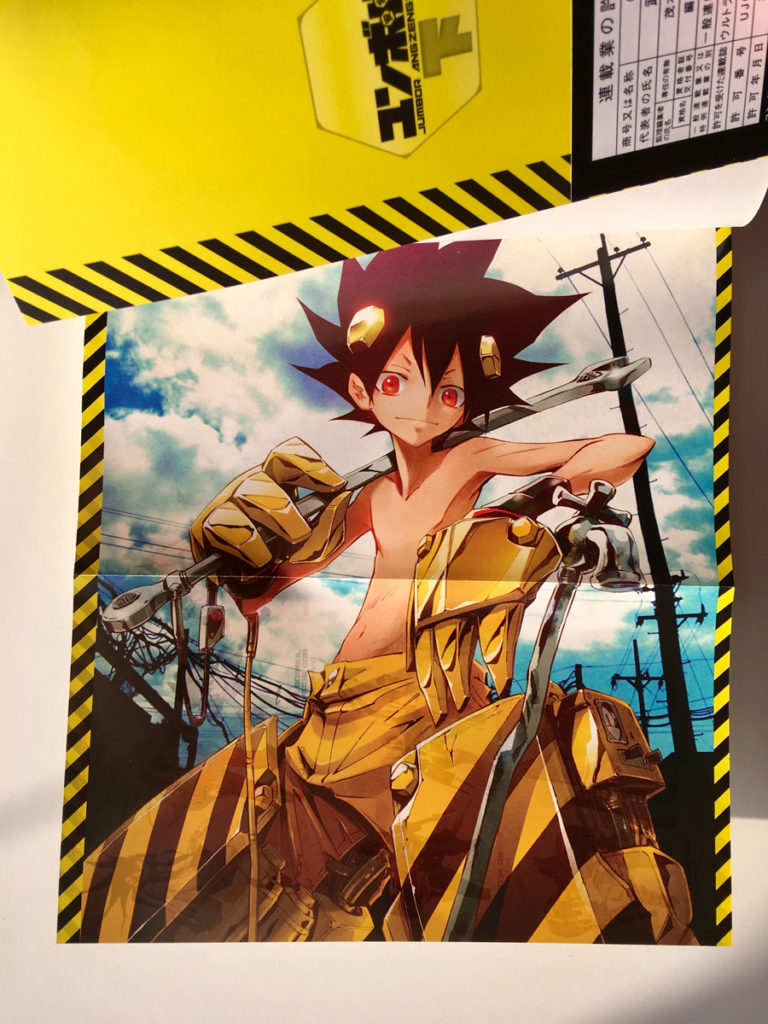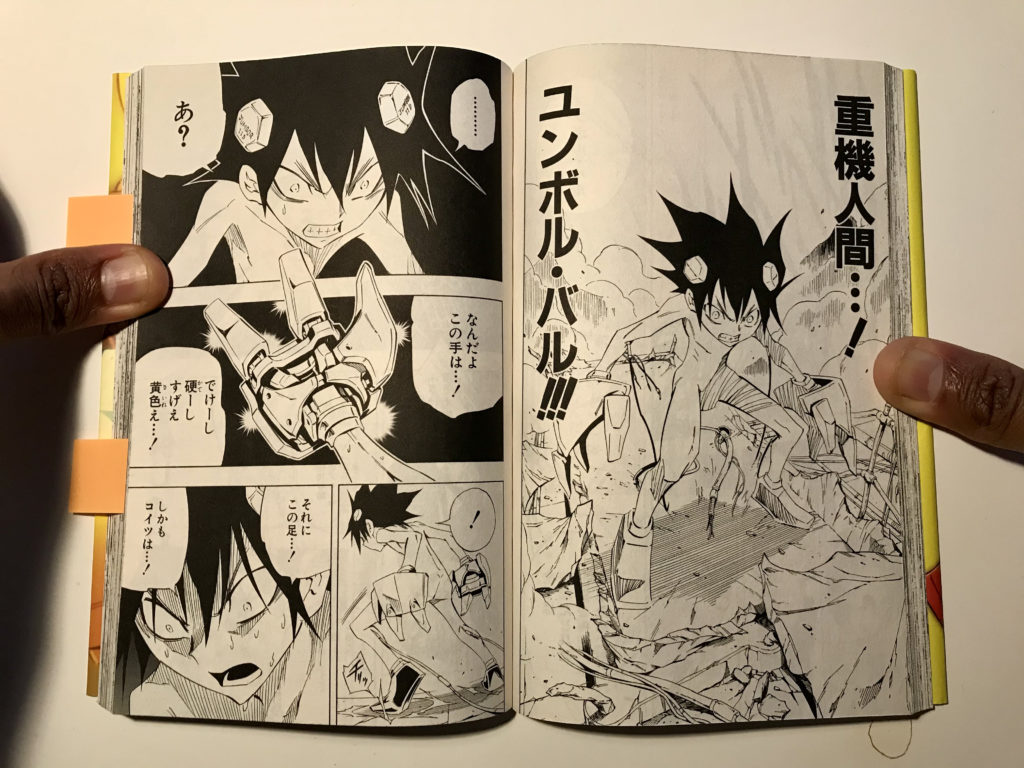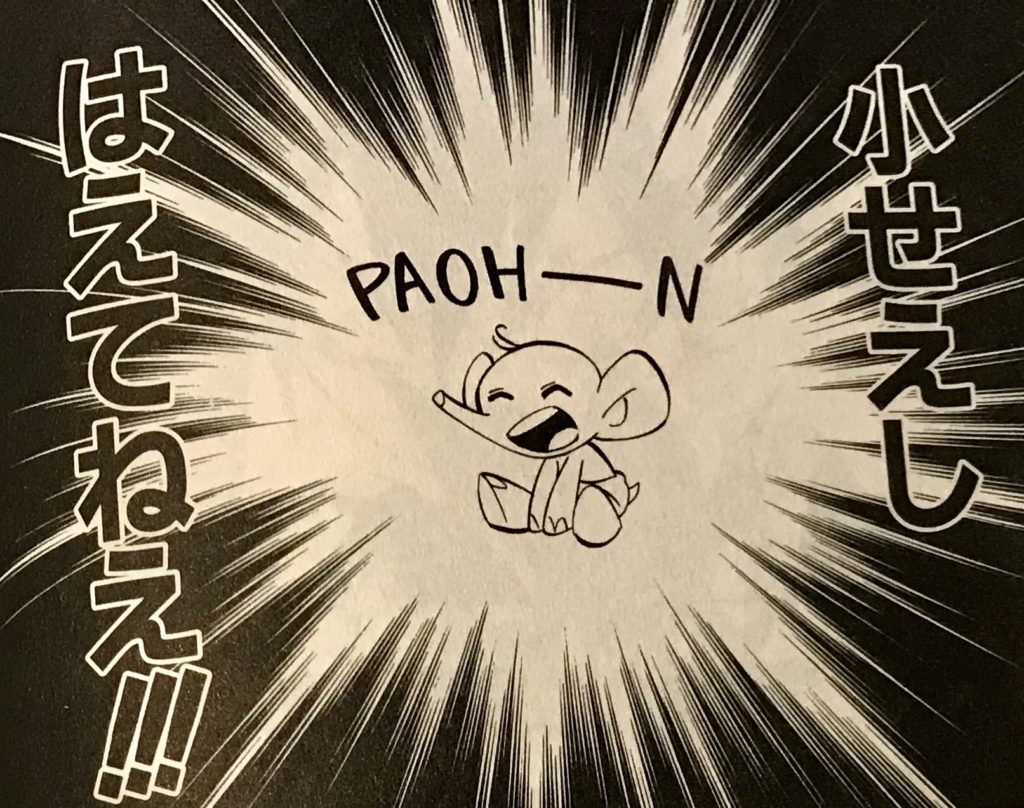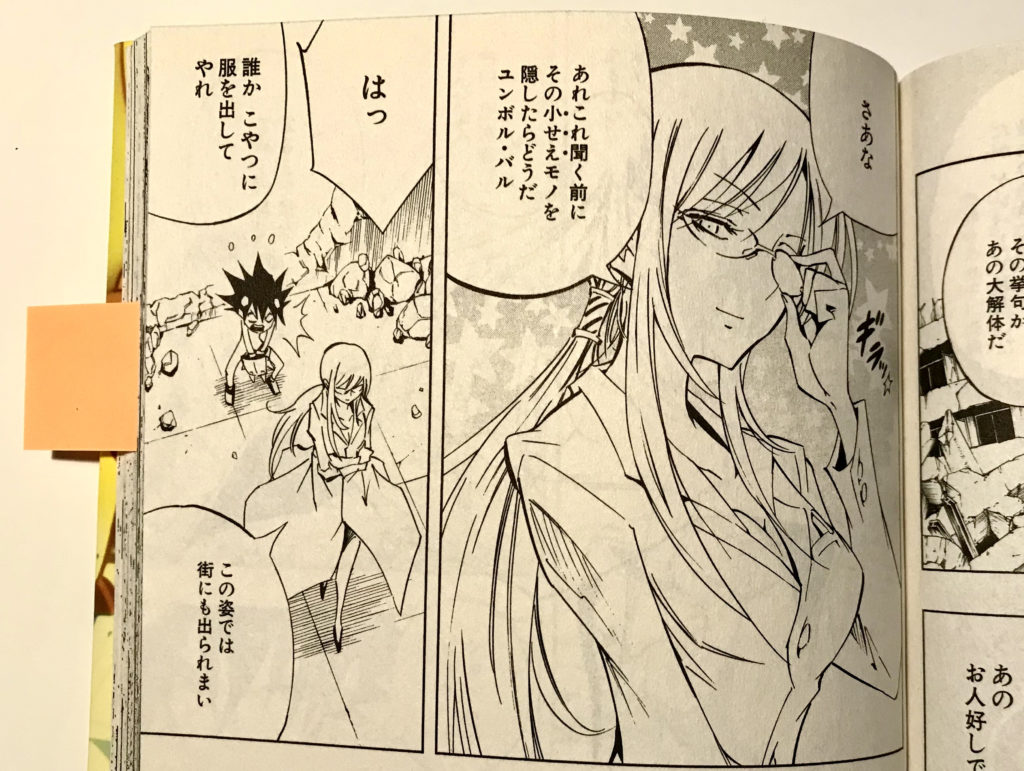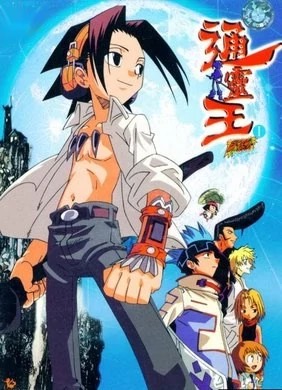Volume 15 of Full Ahead! Coco (フルアヘッド!ココ) by Yonehara Hideyuki (米原秀幸) contains the most beautiful example of the kind of man/boy romance that is so common in mainstream boys’ manga. The series is about how the orphan Coco Felkena finds an alternative family in the form of a gang of pirates. He is especially close to the captain, Crazy Barts, a long-haired man in his twenties who always struts around shirtless.
Boy wants to be taught
Volume 15 of Full Ahead! Coco starts in the middle of a fight, in which captain Barts is hurt badly by the enemy. In a heart-wrenching frame, Coco, tears flowing from his eyes, begs of the enemy:
There are so many things I still want to learn from Barts! Please … Don’t kill him … Don’t kill him!!
Full Ahead! Coco, volume 15, chapter 127, page 79.
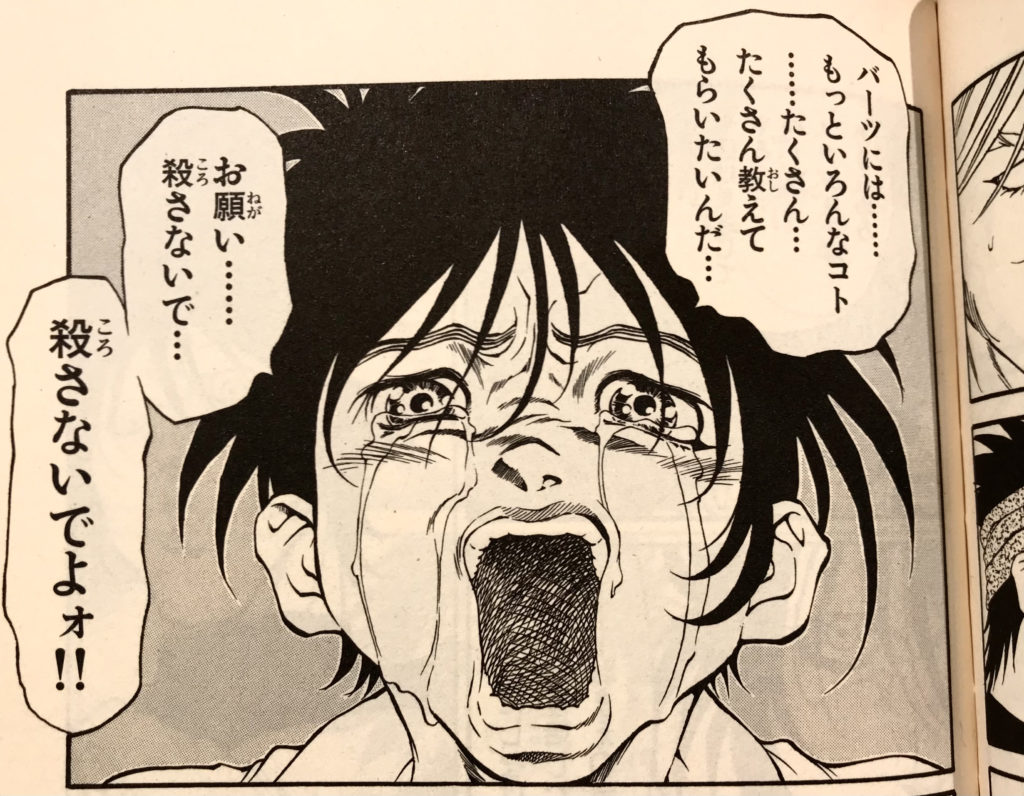
This brilliantly captures a typical dynamic in man/boy relations, namely teaching: Boys want to learn from men in order to become men themselves. This has been the theme of numerous coming-of-age rituals all over the world, most notably among the Dorians in ancient Greece, where a boy and a man went on a three month trip together, during which the man taught the boy to hunt. The theme is almost satirically spelled out in the superhero anime My Hero Academy (僕のヒーローアカデミア), where Midoriya is taught by All Might.
Barts survives and the band recuperates in a nearby guesthouse, all in one room, like the alternative family that they are. Barts’s swords are broken, and he needs to go on a trip to fix them or get new ones. He declares that he’ll go with Coco, only the two of them. Close-up on Coco’s surprised face: “Only the two of us?”
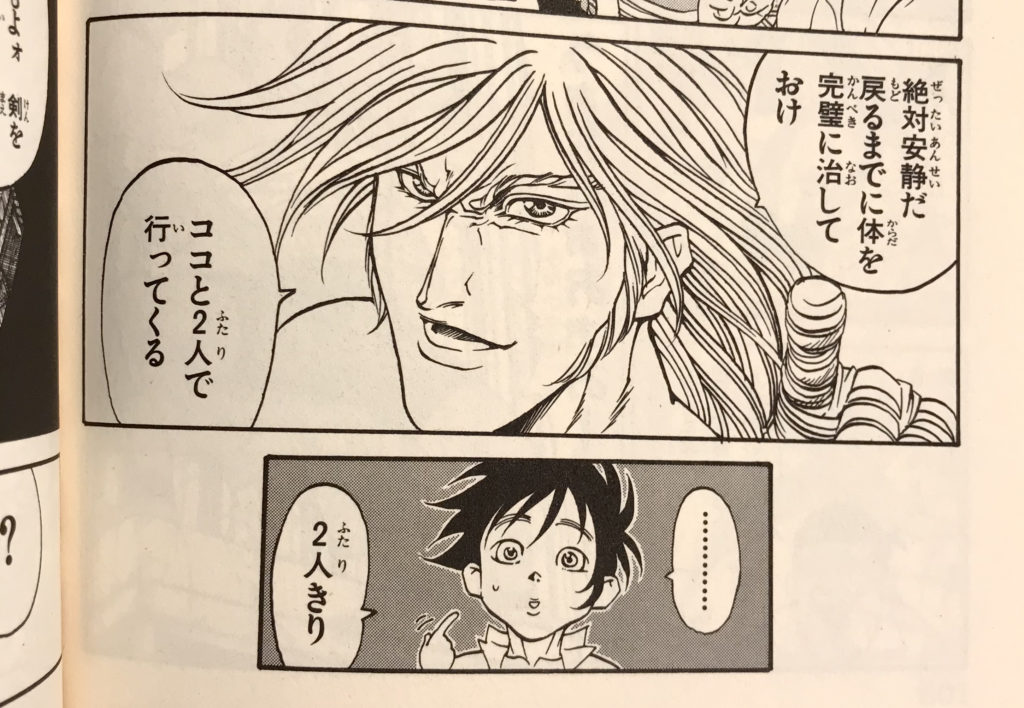
Preparations are made and they sail off. Coco narrates to the reader:
For the first time I’ll go alone with Barts on a sailing trip. My body has never felt this excited!
P. 106
The next chapter begins with a full-page illustration of the ship surrounded by the ocean, and the exclamation: “Only the two of us!”
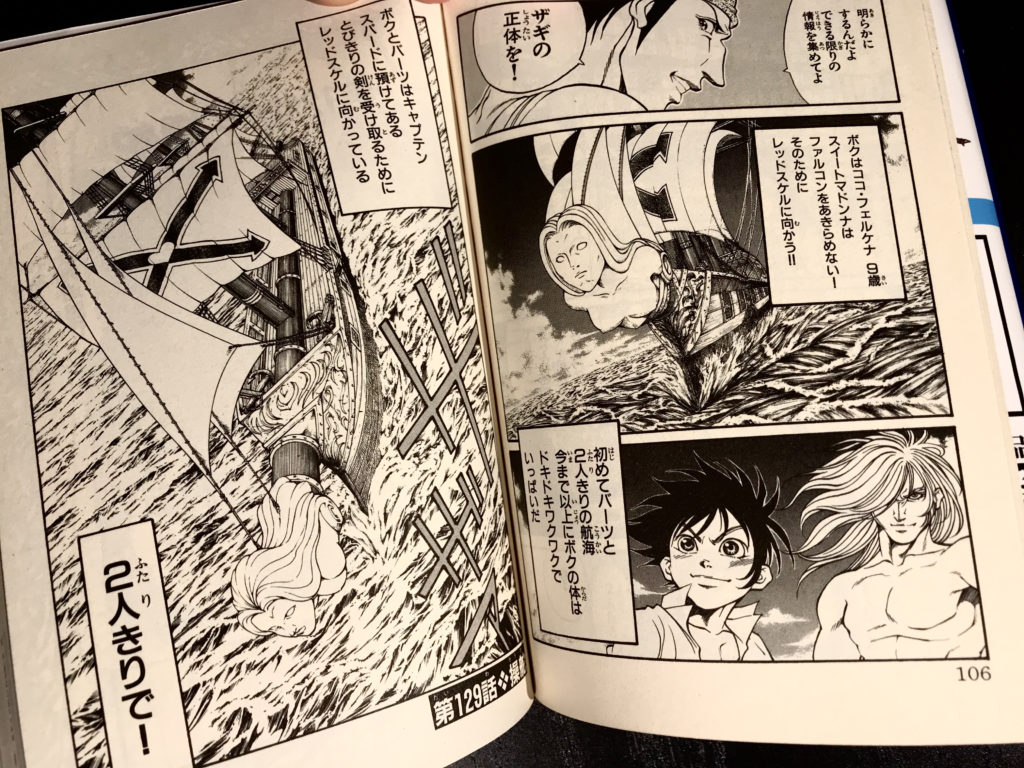
Man and boy get naked
Chapter 129 is all about the everyday life of the boy and the man onboard the Sweet Madonna. Barts puts Coco behind the ship’s wheel (舵/かじ) and goes fishing from the gunwale while Coco endures the challenges of trying to navigate the ship according to Barts’s instructions: He has to turn the wheel in the right direction the right number of times depending on the direction of the wind and the position of the sun. It’s exhausting and doesn’t go too well in the beginning. The ship goes round and round and Barts taunts him until the boy has had enough:
I can’t navigate!! It’s because of your crappy teaching!
P. 119
In my reading, this is all part of Barts’s intuitive education. The boy has mellowed out through some initial hardships, and is ready to learn. “Hey, Coco”, Barts says, sits himself down next to the boy, and starts explaining:
Do you know why I’m always shirtless? It’s in order to feel the wind and the sun on my body. The direction and strength of the wind, the position of the sun – it’s all caught by my body and transferred to the wheel.
P. 120
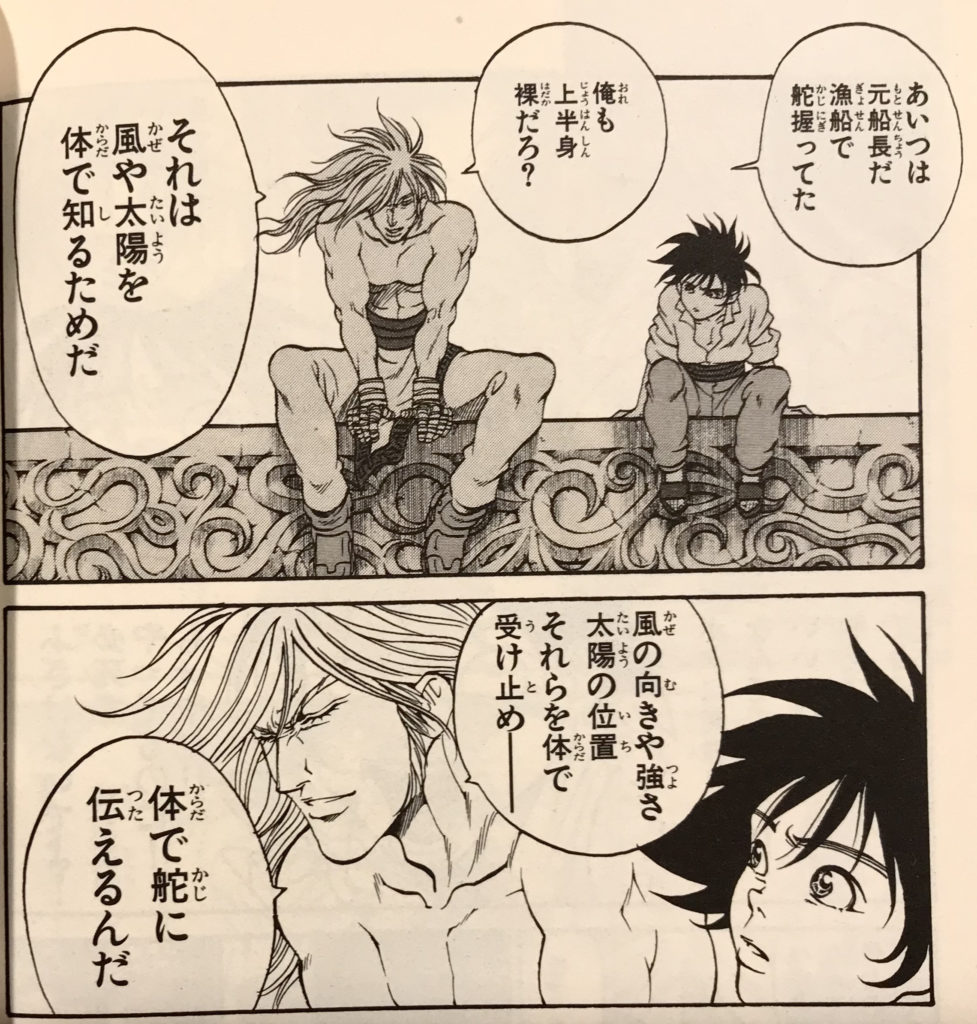
He explains a bit more and then jumps off the ledge and leaves the boy alone to ponder what he has heard. Coco repeats the captain’s words to himself:
“To know with my body … To remember with my body …”
P. 121
Coco glances at the ship’s wheel again. Before we know it, he throws off his shirt and jumps up behind the helm.
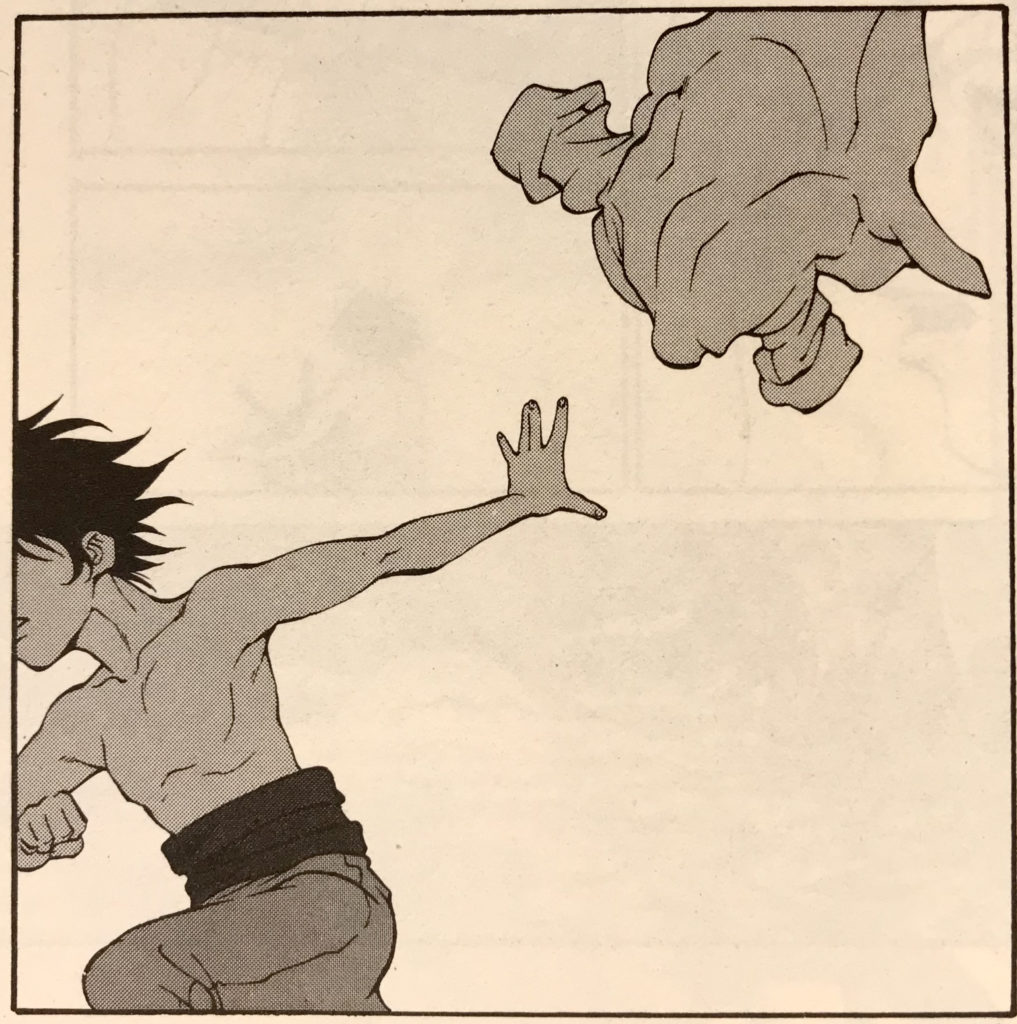
The wind and the sun caress the boy’s shirtless body as he learns the skill of navigating a ship. As the sun sets, he falls asleep at the wheel. Barts, who has been watching over him, takes the boy in his arms and carries him to a makeshift bed on the deck. As he does so, there is a flashback to the scene in chapter 127, with the crying Coco exclaiming that “there are so many things I still want to learn from Barts”. We understand that this is exactly what has happened here: The man has imparted his knowledge to the boy. After Barts has put a blanket over the sleeping Coco and taken over the wheel, he looks at the stars and concludes that they have drifted way too much west, but I guess that’s part of letting the boy learn by doing.
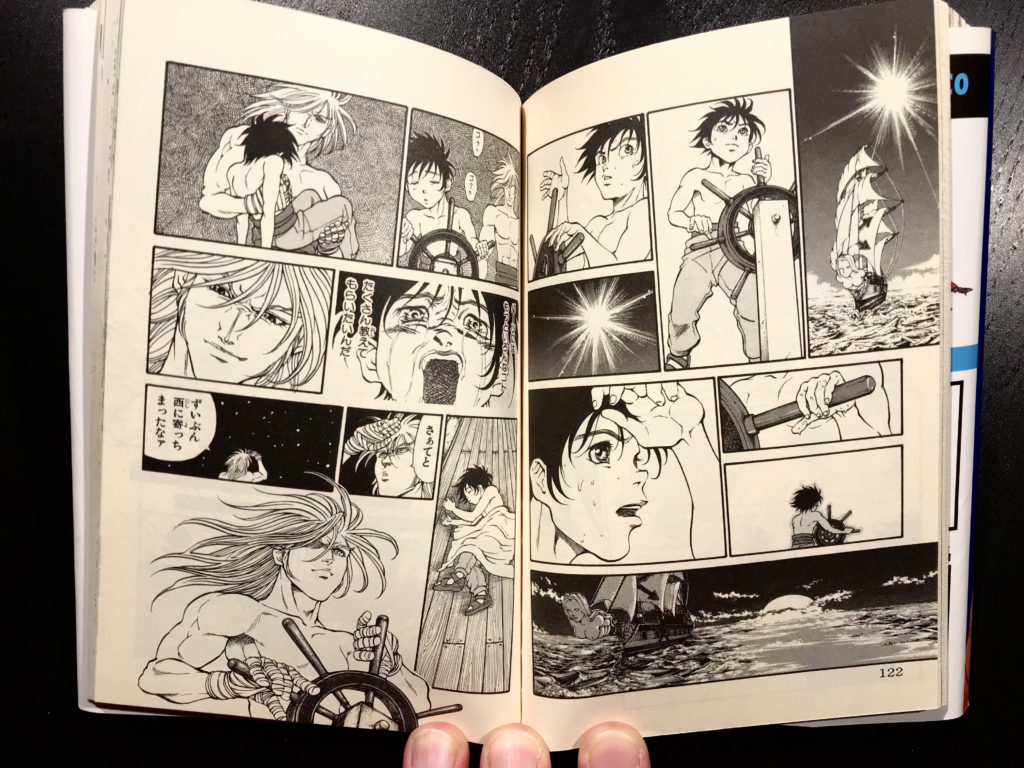
Next day, Coco continues navigating. Maybe several days have passed when Coco sees something in the horizon and yells at Barts:
Look Barts! Land! Laaaand!!
P. 126
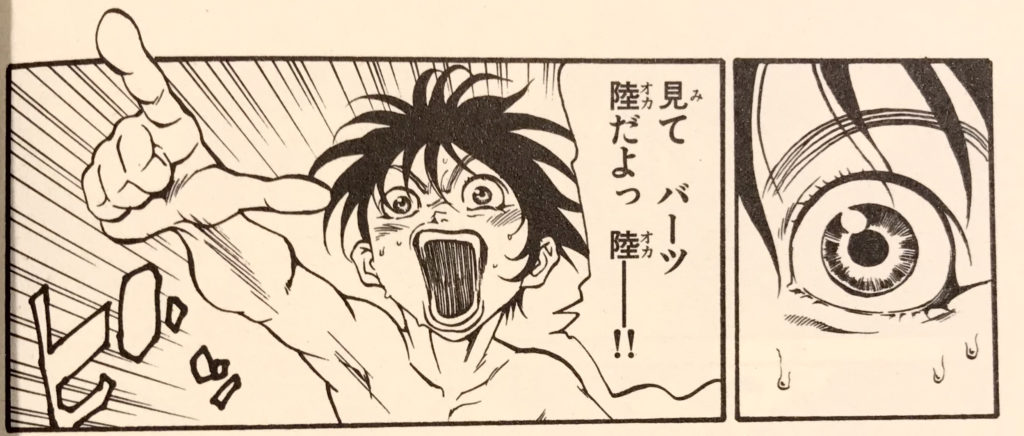
The boy has taken them ashore. The trip that they undertook, “only the two of them”, has been a success: Teaching and learning has taken place, and they have come out on the other side. The cover page of the next chapter solidifies this impression: In an artistic watercolour painting, the shirtless boy and man face the reader with confident smiles. We did it, they seem to say. Only the two of us.
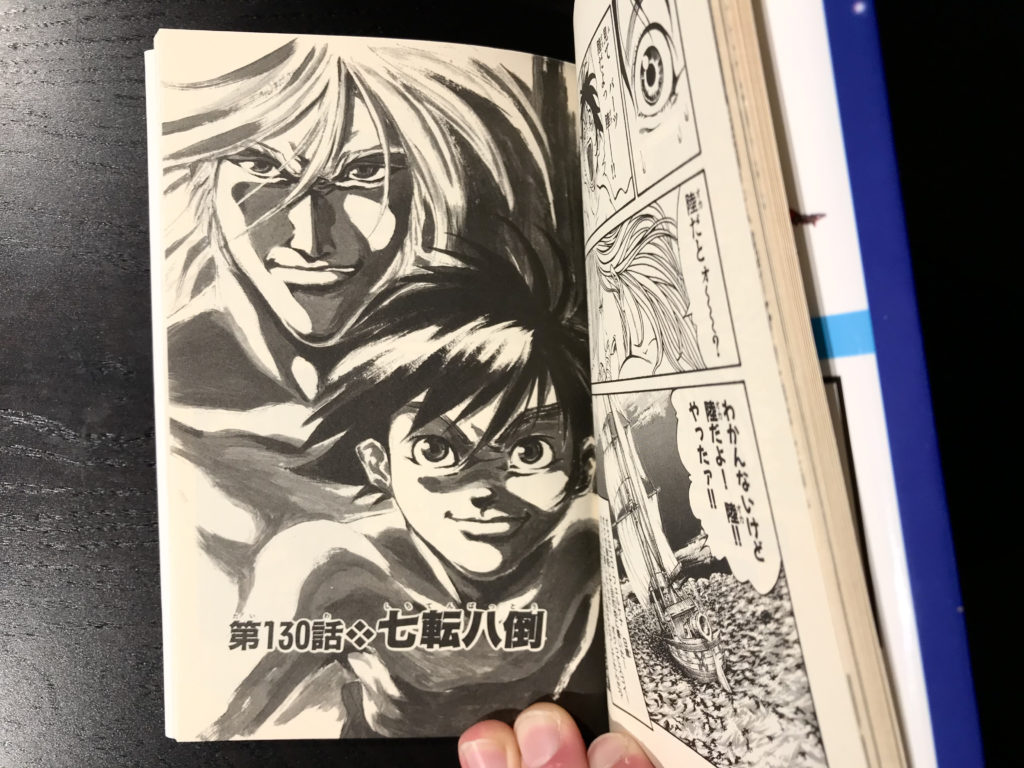
I found this whole chapter not only very beautiful, but also important in that it instils the teaching aspect of man/boy relationships in the reader, and it does so not in a subcultural shota comic, but in a mainstream manga that was serialised in a major publication. There is a clear man/boy eroticism bubbling under the surface here, enhanced by the theme of getting undressed as an integral part of the learning process.
You stole my man!
Your typical action-packed boys’ manga adventure follows, where Coco and Barts get the chance to save each other’s lives. As they sail away again in chapter 131, the boy behind the helm again, the training continues. Barts tells Coco that although they are pirates, there is one thing that a pirate must never steal, according to some unwritten code of conduct. He doesn’t get to tell Coco what it is, because they realise they are followed by another pirate ship.
As they board the enemy ship, Barts is taken captive but Coco manages to hide, and even finds his way into the abandoned captain’s cabin. There he finds some kind of expensive looking necklace framed on the wall. As the enemy captain is holding a sword to Barts’s neck on the deck, Coco rushes out and dangles the necklace outside the gunwale, threatening to drop it into the sea if they don’t release Barts. Everyone looks at Coco in shock. The enemy captain walks up to the boy, slaps him in the face so that he falls backwards onto the deck, hand still clenching the necklace.
“Listen up, you brat”, the enemy captain says. He explains that there is a certain thing that pirates don’t steal from each other, something that is more important than life itself, namely that necklace, which has been traded down through generations and represents his father’s memento. “Oh yeah? Well you did the same,” the boy counters. “You stole Barts from me!!” The captain is obviously moved by the implication of the boy’s words, and they decide to trade the necklace for Barts – both “more important than life itself”.
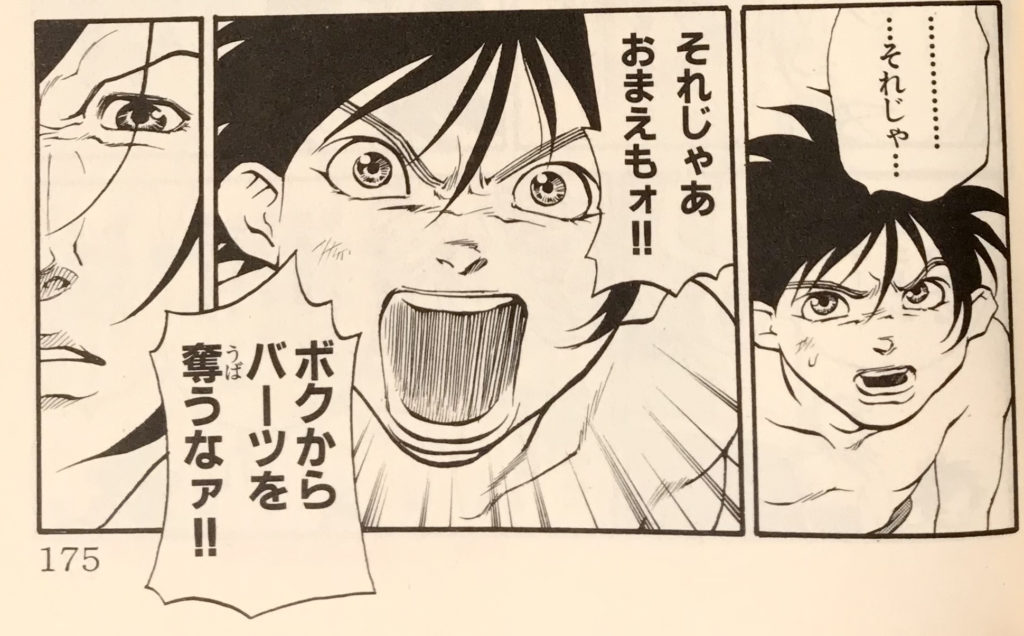
After this gooey love story, the volume ends with another relaxing chapter, in which Coco and Barts disembark on a female island where Coco will learn to cook, but well, that’s another story!
